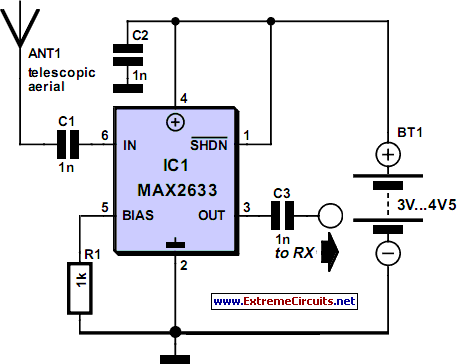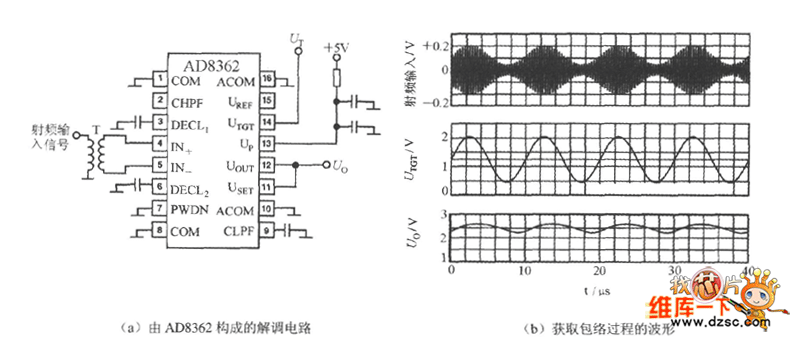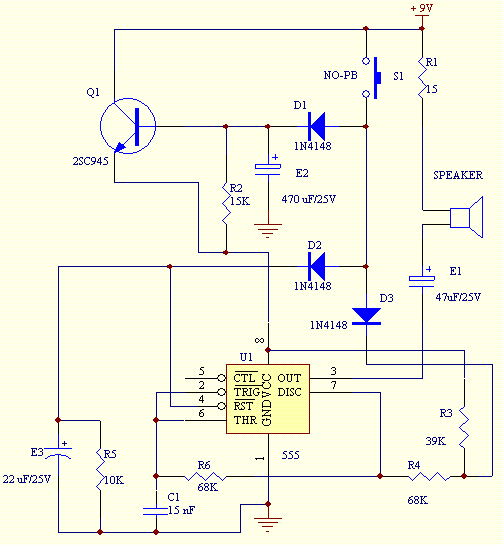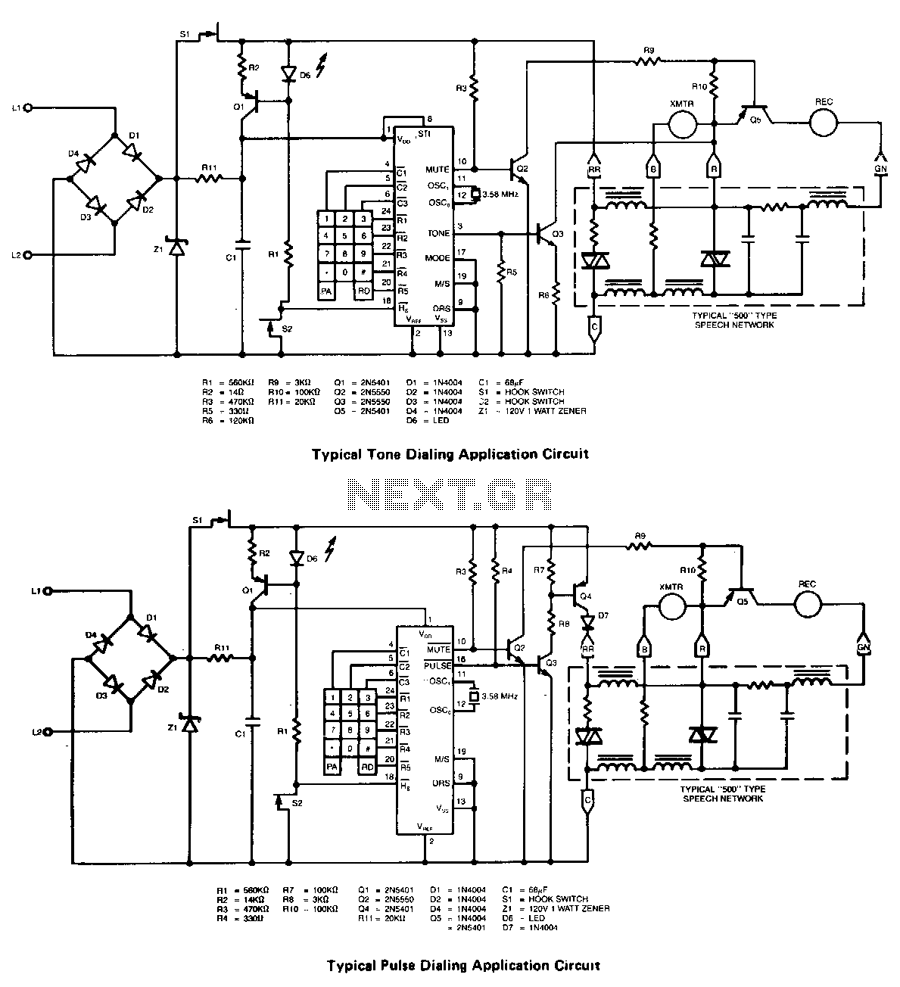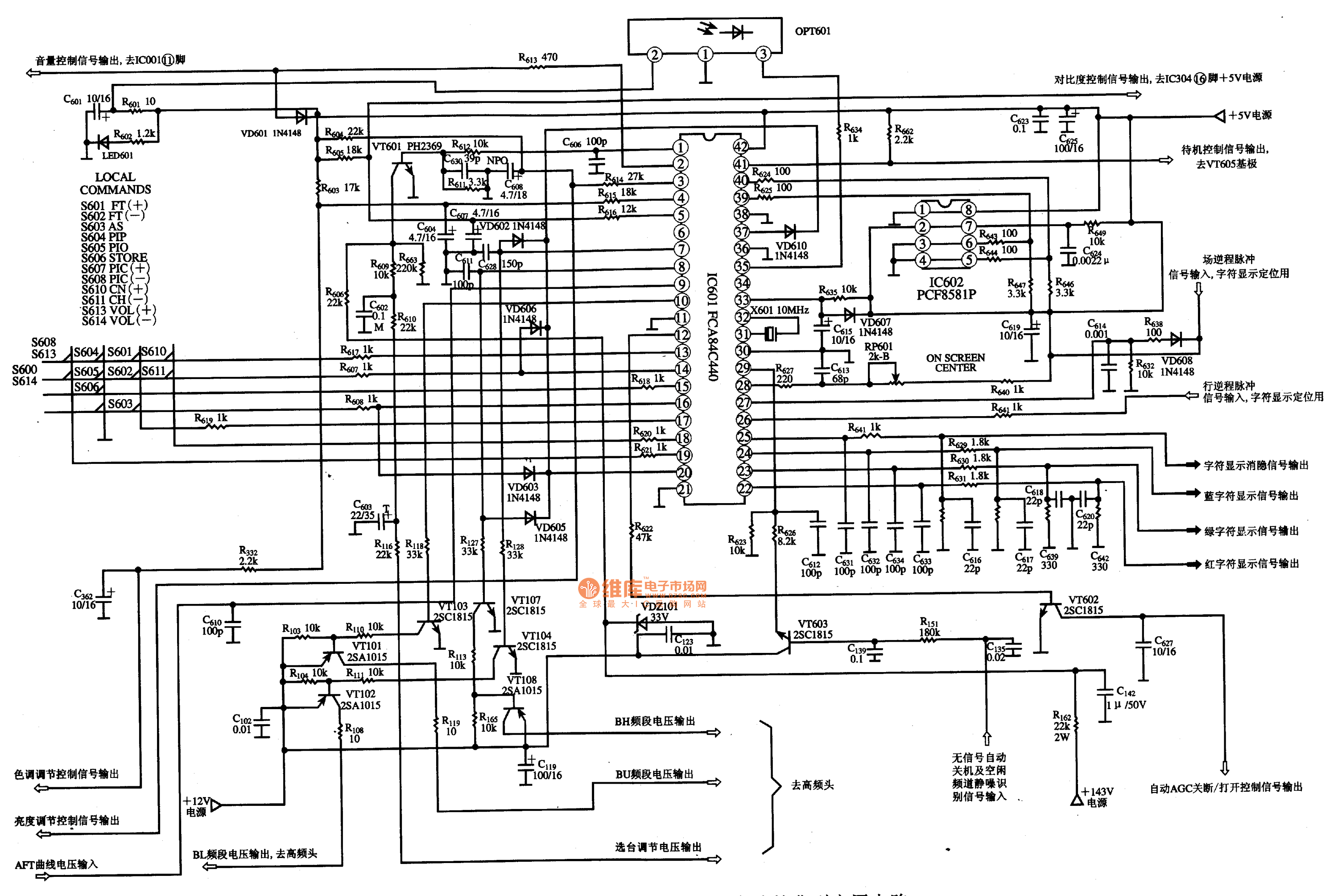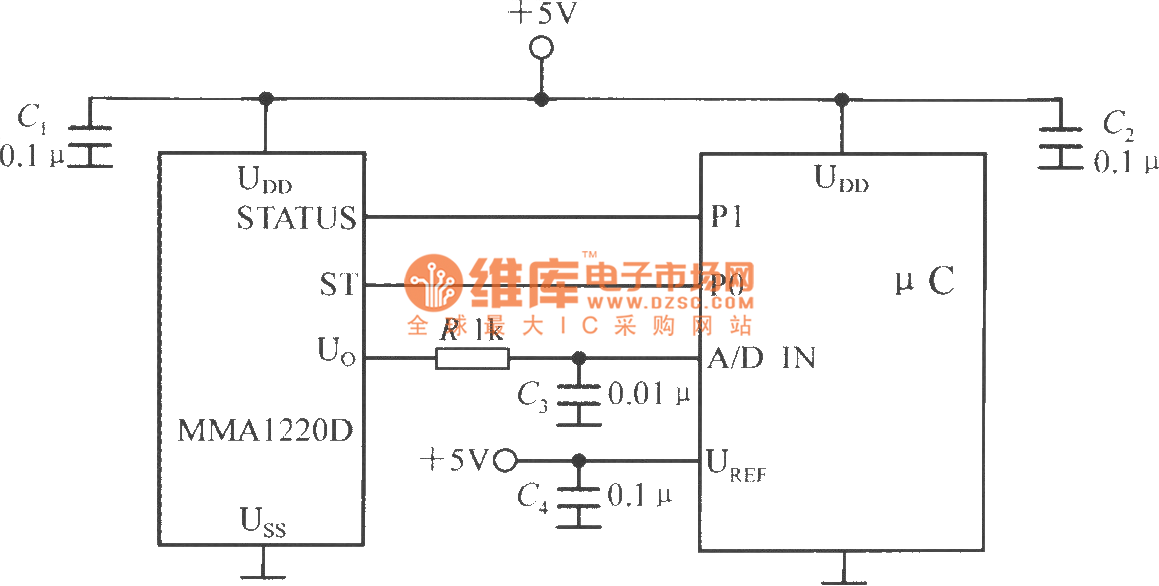
Single-Chip Chime
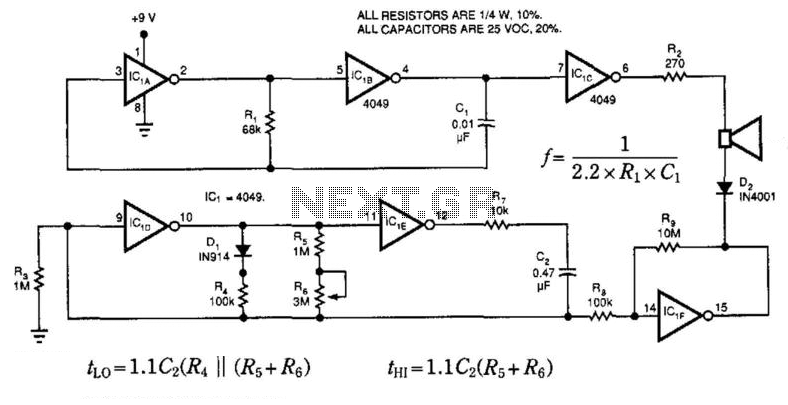
This circuit utilizes a single integrated circuit (IC) to generate a pleasant tone and features one control for adjusting the tone's chiming rate. The circuit comprises several components: IC1A and IC1B, which function as an astable multivibrator, producing the basic tone at a frequency of 668 Hz. IC1C serves as a buffer for the multivibrator's output, directing it to an 8-ohm speaker. A current-limiting resistor, R2, regulates the speaker's volume, with a minimum value of 220 ohms. Additionally, IC1D and IC1E create an asymmetric astable multivibrator that introduces a chime effect to the basic tone. The frequency of the chime effect is influenced by R7, which provides a slowly varying output signal that results in a pleasant decay for the chime. Finally, IC1F acts as an inverting amplifier for the chime multivibrator.
The circuit design effectively combines multiple functionalities into a compact format, utilizing a single IC to streamline the production of sound. The astable multivibrator configuration formed by IC1A and IC1B is crucial for generating the fundamental tone, which operates at a frequency of 668 Hz. This frequency is determined by the values of the resistors and capacitors connected to these two operational amplifier stages, which can be adjusted to modify the tone's characteristics.
The output from the multivibrator is buffered by IC1C to ensure that the signal is strong enough to drive the connected 8-ohm speaker. The inclusion of a current-limiting resistor, R2, is essential for controlling the volume output, preventing excessive current from damaging the speaker while allowing for adequate sound levels.
The circuit further enhances the auditory experience through the asymmetric astable multivibrator formed by IC1D and IC1E. This section introduces a chime effect that adds complexity and richness to the basic tone. The frequency of the chime effect is modulated by the resistor R7, which influences the timing characteristics of the multivibrator, resulting in a signal that varies slowly over time. This slow variation contributes to a more appealing auditory effect, simulating the natural decay of a chime.
Finally, the role of IC1F as an inverting amplifier is to amplify the chime signal, ensuring that the output maintains sufficient amplitude for effective sound projection through the speaker. The overall design of this circuit not only demonstrates efficient use of components but also showcases an innovative approach to sound generation, allowing for user-adjustable tonal qualities and a pleasing auditory experience. This circuit uses only one IC, produces a pleasant tone, and sports a single control for adjusting the tone"s chiming rat e. IC1A and IC1B form an astable multivibrator, which produces the circuit"s basic tone. The multivibrator"s frequency is: The component values produce a 668-Hz tone. IC1C buffers the multivibrator"s output to the 8- speaker. Current-limiting resistor R2, determines the speaker"s volume. R2 minimum value is 220 . IC1D and IC1E form an asymmetric, astable multivibrator, which adds a chime effect to the circuit"s basic tone. The chime effect"s frequency is: R7 gives this rate multivibrator a slowly varying output signal to produce a pleasant decay for the chime effect.
IC1F is an inverting amplifier for the chime multivibrator. 🔗 External reference
The circuit design effectively combines multiple functionalities into a compact format, utilizing a single IC to streamline the production of sound. The astable multivibrator configuration formed by IC1A and IC1B is crucial for generating the fundamental tone, which operates at a frequency of 668 Hz. This frequency is determined by the values of the resistors and capacitors connected to these two operational amplifier stages, which can be adjusted to modify the tone's characteristics.
The output from the multivibrator is buffered by IC1C to ensure that the signal is strong enough to drive the connected 8-ohm speaker. The inclusion of a current-limiting resistor, R2, is essential for controlling the volume output, preventing excessive current from damaging the speaker while allowing for adequate sound levels.
The circuit further enhances the auditory experience through the asymmetric astable multivibrator formed by IC1D and IC1E. This section introduces a chime effect that adds complexity and richness to the basic tone. The frequency of the chime effect is modulated by the resistor R7, which influences the timing characteristics of the multivibrator, resulting in a signal that varies slowly over time. This slow variation contributes to a more appealing auditory effect, simulating the natural decay of a chime.
Finally, the role of IC1F as an inverting amplifier is to amplify the chime signal, ensuring that the output maintains sufficient amplitude for effective sound projection through the speaker. The overall design of this circuit not only demonstrates efficient use of components but also showcases an innovative approach to sound generation, allowing for user-adjustable tonal qualities and a pleasing auditory experience. This circuit uses only one IC, produces a pleasant tone, and sports a single control for adjusting the tone"s chiming rat e. IC1A and IC1B form an astable multivibrator, which produces the circuit"s basic tone. The multivibrator"s frequency is: The component values produce a 668-Hz tone. IC1C buffers the multivibrator"s output to the 8- speaker. Current-limiting resistor R2, determines the speaker"s volume. R2 minimum value is 220 . IC1D and IC1E form an asymmetric, astable multivibrator, which adds a chime effect to the circuit"s basic tone. The chime effect"s frequency is: R7 gives this rate multivibrator a slowly varying output signal to produce a pleasant decay for the chime effect.
IC1F is an inverting amplifier for the chime multivibrator. 🔗 External reference
Warning: include(partials/cookie-banner.php): Failed to open stream: Permission denied in /var/www/html/nextgr/view-circuit.php on line 713
Warning: include(): Failed opening 'partials/cookie-banner.php' for inclusion (include_path='.:/usr/share/php') in /var/www/html/nextgr/view-circuit.php on line 713
